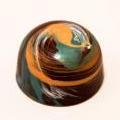-
Welcome to the eG Forums, a service of the eGullet Society for Culinary Arts & Letters. The Society is a 501(c)3 not-for-profit organization dedicated to the advancement of the culinary arts. These advertising-free forums are provided free of charge through donations from Society members. Anyone may read the forums, but to post you must create a free account.
Things that are a total waste of money
-
Similar Content
-
- 193 replies
- 36,009 views
-
- 86 replies
- 16,279 views
-
Plastic Clamshells - love them or hate them? Discussion of plastic waste and alternatives. 1 2
By MaryIsobel,
- 27 replies
- 3,720 views
-
- 67 replies
- 11,060 views
-
- 4 replies
- 3,196 views
-
-
Recently Browsing 0 members
- No registered users viewing this page.






Recommended Posts